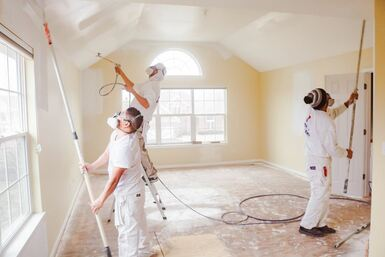
BrightSide Painting & Remodeling, a professional painting and repair company serving Metro North Atlanta, Georgia, announced the availability of professional color consultation and carpentry repair services for exterior repainting projects. Led by Jon Edens, owner and recent appointee to the Sherwin-Williams Advisory Board, the company specializes in all aspects of painting and offers a variety of services for interior and exterior residential repairs. For more details, please visit https://www.brightsidepropainting.com The newly updated services provide personalized advice from a professionally trained color consultant, allowing for tailored product recommendations and overall project guidance to fit each customer’s taste and budget. Georgia’s fluctuating, unpredictable climate leaves homes vulnerable to a wide range of harmful and potentially costly environmental conditions. With wide variations in daily temperatures across seasons and invasive considerations like rain and humidity as constant factors, finding the right time to make repairs becomes just as important as knowing what needs to be fixed. BrightSide Painting & Remodeling removes the guesswork associated with home repairs and seeks to provide reliable, long-lasting improvements capable of withstanding the elements. Emphasizing detailed planning and preparation, the company’s color consultation and exterior painting services work together to make sure a home’s structural integrity matches the appeal of its outward aesthetic. Work begins with a 90-minute in-home visit from a professionally trained Sherwin-Williams Personal Color Consultant. From that point, recommendations flow to fit the client’s personal objectives, style preferences, and budget. Exterior painting and repair considerations include assessing potential weather impact as well as determining the feasibility of desired construction materials. Work preparation addresses factors like temperature, surface types (e.g., stucco, brick, cedar, etc.), and treatment for structural compromises such as wood rot. Projects are supervised for quality and timely completion, with a final walkthrough provided for customer approval. With this announcement, BrightSide Painting & Remodeling seeks to alleviate many homeowners’ apprehensions regarding available solutions for durable, cost-effective exterior paint and repair work in the Metro North Atlanta area. A spokesperson for the company said: “Homeowners depend on paint to both beautify and protect. When it comes to ensuring that your paint project is a success, there is no more important place to start than preparation.” Interested parties can find out more information by visiting https://www.brightsidepropainting.com

Brightside Painting & Remodeling, a specialist painting and repair company serving the Metro North Atlanta, GA, area, announced the expansion of their priority and discounted services programs with the inclusion of all real estate agents throughout the state of Georgia. More details can be found at: http://brightsidepropainting.com This expansion means all real estate agents and their clients referred to BrightSide Painting & Remodeling will qualify for a 10% discount and have prioritized scheduling of estimates and project work. A recent review of the Metro Atlanta, GA, housing market noted that the market was aggressively rising. The median home price in metro Atlanta increased 17.9% in the year to January 2021 and the Atlanta housing market is expected to see one of the steepest rises in home prices for the whole of the US during 2021. The expansion of the partner program reflects the commitment of Brightside Painting & Remodeling to helping Georgia real estate agents deal with the rapidly rising housing market. Completing interior and exterior painting and repairing time-sensitive projects on residential properties without delay helps put properties on the market and close their sale more quickly, but without compromise to the professional quality of the work. Brightside Painting & Remodeling specializes in all aspects of residential painting and repair, including internal painting, external painting, deck staining and painting, and interior and external repairs. Services include complimentary estimates and onsite consultation with a specialist color consultant. More information can be found at https://www.brightsidepropainting.com/contact A spokesman said: “With this expansion of our partner program, BrightSide is committed to helping Georgia real estate agents keep pace with this roaring housing market and close for their clients without delay.” Interested parties can find more information on Brightside Painting & Remodeling at http://brightsidepropainting.com
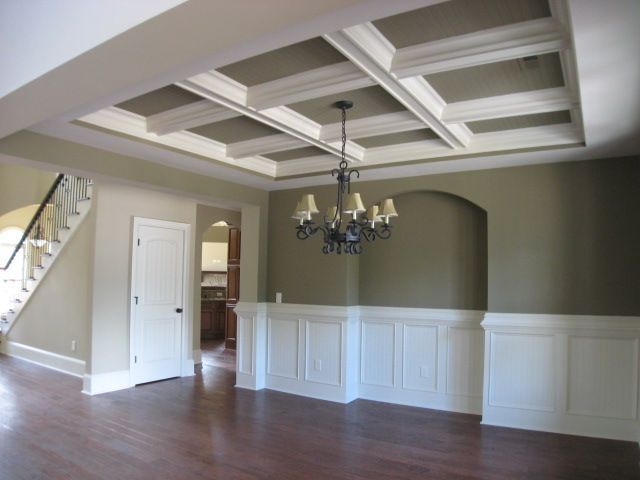
BrightSide Painting & Remodeling, a professional residential painting and repair company based in Woodstock, Georgia, has launched an update of its services providing painting and remodeling remedies for customers in the metropolitan North Atlanta area and surrounding locales. More details can be found at https://www.brightsidepropainting.com/exterior-painting . The most recent announcement intends to supply high-quality, affordable, and comprehensive solutions for all aspects of residential painting and remodeling projects. BrightSide Painting & Remodeling offers a range of services, including interior and exterior painting jobs, deck staining, and interior and exterior repairs. The company also offers complimentary initial consultation estimates, project estimates, and color consultations, and provides on-site project supervision. For interior painting projects , the company offers the option of an in-home visit with a professionally trained SherwinWilliams Personal Color Consultant to create a custom color palette adapted to customers’ decorating styles. For interior projects, the company’s services include a detailed preparation process that covers workspace protection, wall cleaning, sanding surfaces, priming, and painting over wallpaper. For exterior painting projects , the company also offers in-home visits with professionally trained color consultants to design customized color palettes. Their thorough preparation process for outdoor projects includes planning for the weather to make sure exterior conditions do not slow down drying rates; prep work such as cleaning, drying, dulling, priming, caulking, and spraying siding; and optimally matching paints and other treatments to different kinds of exterior surfaces. Exterior painting and staining projects are on offer at 10% discounted prices during spring 2021. The company’s most recent announcement is in line with its commitment to providing high-quality products and services for residential paint and repair projects in Woodstock, Georgia, the metropolitan area of North Atlanta, and surrounding areas. A satisfied client said, "BrightSide Painting & Remodeling provided excellent service from start to finish. I appreciated the attention to detail, the professionalism of everyone who worked in my home, the honest and fair pricing, and the timely manner in which the work was completed. I am a very happy customer who would recommend them to my family and friends.” Interested parties can find more information at the above-mentioned URL.
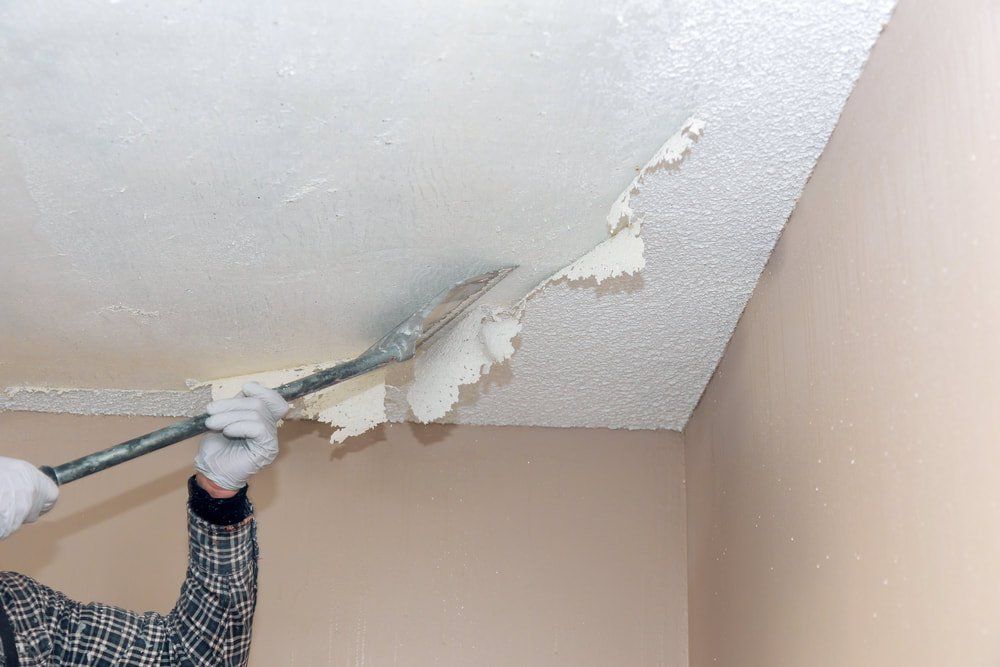
Several decades ago, popcorn and stippled ceilings were commonly seen in residences because of their ability to hide imperfections, acoustics, and bright white appearance. However, the Clean Air Act of 1978 banned asbestos in ceiling treatments, and popcorn ceilings fell out of favor in much of the country. While it’s quite likely that your textured ceiling is safe, some of the older ones do run the risk of containing asbestos. If inhaled in large quantities, asbestos fibers can cause lung disease, scarring of the lungs and in severe cases, even lung cancer. If you are concerned about the possibility of your ceilings containing asbestos, it is possible to have samples tested in a laboratory under a microscope. More often than not, our customers have us remove their textured ceilings in an effort to modernize their living spaces after moving into an older home, or in order to update the home prior to putting it on the market to be sold. Removing textured ceilings can be expensive. Pricing can vary based on several factors, one of which is whether or not the stipple or popcorn has been painted over, and if so, how many coats of paint have been applied. Coats of paint make it more stubborn and difficult to sand down, and the number of coats previously applied can even vary from room to room. Also, since we actively scrape and sand it off, often with the use of machines and vacuums, it is a messy and dusty procedure. That being said, the process is faster to have completed if the home is vacant and/or new flooring or carpet is to be installed afterwards, although we also have experience removing them while the home is actively being lived in, and fully furnished. In these instances, more time and materials are dedicated to protecting every square inch of floor space and furniture, combined with consistent clean-up efforts throughout each work day, and ultimately a professional cleaning service is also brought in after the final day of painting to leave the home just as it was prior to us being there. Our process starts with the protection of all cabinets, floors, furniture, etc. by using tape, plastics, & masking paper. Once we remove the texture from the ceilings, drywall mud coats are applied to the surface, then sanded. In some instances multiple coats of drywall mud have to be applied prior to sanding. After all of the textured materials and patterns are no longer visible, we prime the surface and then apply the finish coats of ceiling paint, most often in a flat sheen. Once the ceilings are finished and depending on the total scope of work associated with the project, it goes faster from that point on. Typically we will then paint the trim, spraying it whenever possible for the most even finish. Color changes can take more than one coat, regardless of the type of application. Finally we will cut in by hand and roll all of the walls after they are prepared for painting. Contact BrightSide Painting & Remodeling today for a complimentary estimate at (678) 561-7129 or feel free to self-schedule at a time convenient for you at brightsidepropainting.com.
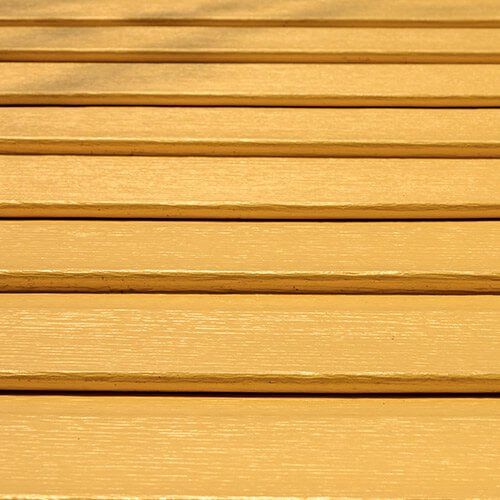
Problems with siding occur because defective manufacturing or improper installation which can lead to pieces popping out of place. Sometimes, however, problems can arise from uninformed or inadequate maintenance decisions. Siding warp, an eyesore that is often the result of repainting panels, can become the sole culprit for cheapening a property's curb appeal. Panels warp when the new coat of paint is a darker shade than the manufacturer's original coat due to darker shades of paint naturally absorbing more heat from the sun. When the substrate reaches a temperature higher than it was designed to withstand, the result is often vinyl siding warp. In order to avoid this, do not repaint vinyl siding any darker than the original coating that was provided by the manufacturer. Once the vinyl siding expands beyond a certain limit, it will never contract to its original manufactured shape and will then need to be replaced in order to restore the desired appearance.

Craftsmanship should be the reason that a paint job catches your attention rather than excessive stippling or roller marks on the painted surface! Stippling is littered debris left on what should be a smooth surface, and roller marks are just that; evidence of where the painter used the roller brush. Neither of these mistakes are acceptable on a professionally painted finish. Roller marks can be the result of applying the second coat of paint on the wall before the first coat has completely dried. Conversely, problems can arise if the painter "stretches" the paint. With experience it is learned what the appropriate coverage area should be with a loaded roller. Other reasons for roller marks involve using the the wrong roller cover for the task at hand. For example, make sure the roller cover being used is rated for the type of painting being done (a roller meant to be used with acrylic paint will likely not work as well if used with oil-based paint). Also, using an improper size roller cover (also known as a "nap") can result in paint becoming too thick as you work it over the wall. For smooth surfaces like metal doors use a 3/16" to 1/4" inch nap. For a semi-smooth surface such as drywall, consider using a 3/8" to 1/2" nap. For a semi-rough surface like a textured ceiling, use a 3/4" nap. Lastly, make sure to use a quality paint that adheres well to the surface that is being painted. As with any other industry, there is a "sales" component associated with paint companies promoting their top-tier poducts, but at the same time sometimes you get what you pay for when it comes to the cheaper products out there. Speak with someone who has experience using many products and ask them what they prefer to use on projects similar to the one that you are having completed. To recover from a project that already has excessive stipple remaining on the surface, first make sure that the paint is completely dry. Use sandpaper and sand the debris down carefully until the surface is smooth. Wipe the surface clean and touch up the sanded areas with the same paint that was used originally (from the same can with the same color and sheen from the same store). These techniques will allow you to conceal roller marks or fix stippling paint and refocus the beholder's attention to the craftsmanship!

Depending on various factors including the type of paint, the painter, weather conditions, etc. the longevity of your paint job will vary, but with time, the paint on the exterior of your home inevitably starts fading away and does not look as good as it did in the beginning. Fading is the loss of color pigment in the paint. Often times, the quality of the paint is the main reason for color retention and paint color fading. With inferior quality paint, the upper layers of the paint quickly begin to peel off. The paint coating chalks off, and the color fades out. Over-tinting can also cause exterior color fading. Some colors like bright blue, yellow, and red are more vulnerable to paint color fading due to UV radiation. Darker paints that attract more light can also be particularly vulnerable. Exposure to the elements, such as excessive exposure to sunlight will fade paint color, as the UV radiation is harsh to the pigmentation of the paint. Coastal weather conditions and/or extreme weather temperatures can dull colors as well. Notwithstanding these factors, there are way to achieve and maintain a fresh look to your home. Unfortunately, paint that has started fading and cracking can't be fixed. Part of the solution is to pressure wash before repainting. By repainting with quality paint and using quality caulk prior to doing so, you can achieve a high quality finish that will last. Select a quality paint from a manufacturer that guarantees a degree of UV resistance. If you choose a lighter color, it will absorb less radiation and heat. Also, paints that use inorganic pigments tend to be more resistant to UV radiation. Maintaining the paint is also important for its longevity. Have an annual maintenance plan for pressure washing and inspecting the color coat so that you can stop chalking and fading before it even occurs.
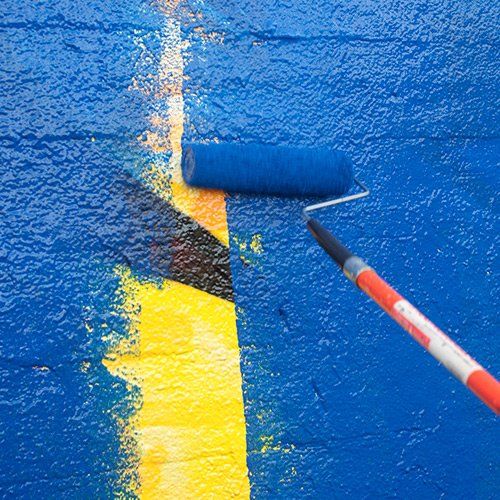
Sometimes after painting an interior surface, the old color “bleeds” through and the color underneath is not completely covered. Paint with poor hiding—a nightmare situation for homeowners and building superintendents—has several causes, all of which can be prevented. Nothing can make an interior space look clean and inviting more than a new coat of paint. In order to get good coverage, here are tips to get the job done right the first time: One reason paint doesn’t cover well is because it was thinned too much. Most paint nowadays does not need any thinning. If it does, however, follow the manufacturer’s instructions. Another reason paint doesn’t cover well is because the substrate is extremely porous. New drywall is an example of such a surface. Other troublesome circumstances are painting over a glossy or semi-gloss paint or a lighter color over a darker color. In these circumstances, use a high-quality primer to get the best adhesion. Painting with latex paint over an oil-based paint also requires a primer, even if is a latex one. Primers have chemical properties to help the topcoat adhere well to the substrate. Only use quality paint from tried-and true paint manufacturers because cheap, low-quality paint won’t cover well. Always start with a clean, dry substrate. Fix holes and cracks with the appropriate caulk or plaster compound and allow the patches to dry. Use rollers and brushes that are appropriate for the paint (latex-based or oil-based) and surface (smooth, semi-smooth or textured). Before starting to paint, stir the paint well because the contents can separate. Remember to stir it periodically while painting. Make sure to have enough paint for the job so that overspreading, which causes poor hiding, is not necessary. Using the proper preparation techniques and quality materials are the keys to eliminating paint with poor hiding, These products are available to give homes and buildings a great paint job that will garner satisfaction for owners and admiration from visitors.
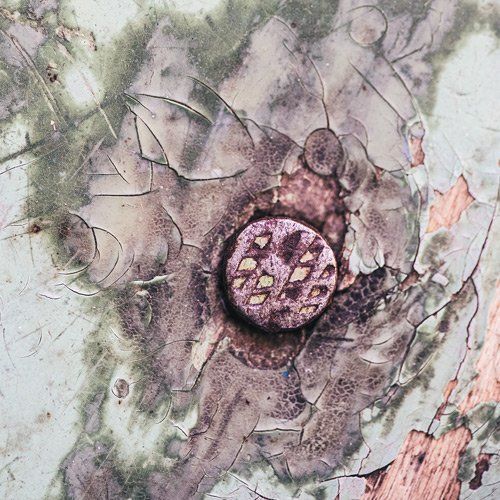
A rusting nail that is still doing its job is harmless, right? Well, that very nail may actually be detracting from the overall appearance of the fence by staining the painted surface. A non-galvanized nail is more likely to exhibit signs of rust. Over time, moisture conditions can cause staining to bleed to the top coat from the rusty nail heads. Replacing the nails may be quite the ordeal, but you can cover them to improve the appearance of the surface. The weathered nails have to be treated in order to diminish the appearance of the rust. Sanding the nail prior to applying the primer to it removes rust from the nail’s surface. Removing as much of the rust beforehand as possible will increase the performance of the primer in thwarting off rust. Next, caulk each nail with a water-based acrylic caulk before any priming or painting is done and allow time for drying. After that, use a rust-inhibitive primer to suppress potential rust from ever reaching the surface. The stainblocking primer should be applied directly to the area where the nails are located. It is recommended that multiple primer coats be used to prevent nail head rusting. Once the final primer coat has dried, you can then apply the finish coats of paint over your nailed surfaces.
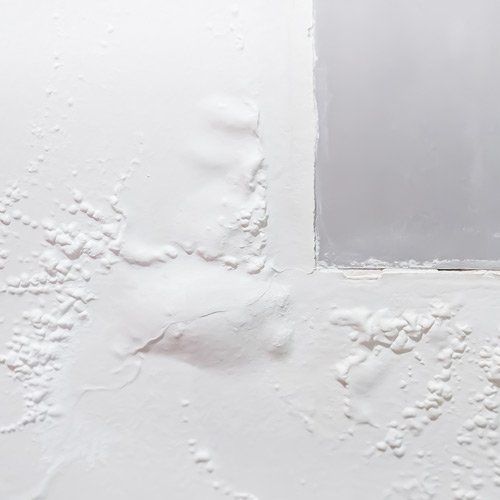
Paint blisters are gas bubbles that are trapped beneath the surface of newly applied coats of paint. These blisters can form on the interior or exterior walls of buildings. Moisture retention is the driving force behind most outbreaks of blistering. Wood and other building materials are actually somewhat porous, and they can absorb significant amounts of liquid. Interior sources of moisture include kitchens and bathrooms. Water vapor from these areas can leech through walls and collect underneath coats of paint. This vapor may then expand, causing loss of paint adhesion and bubbling. Externally, moisture from humidity and rainwater can seep into untreated wooden end-joints or other exposed areas of the woodwork. This moisture can also migrate outwards and cause paint blistering in the process. In addition to these processes, weather conditions can also cause paint blistering issues. For example, hot weather conditions can cause the thinners mixed with fresh paint to vaporize and expand outwards. The vaporized thinner presses against thin layers of dried paint, causing the classic blistering effects. Moist conditions can also have a similar effect. If painters allow excessive amounts of moisture to accumulate on freshly painted surfaces, bubbles and blisters are often the unfortunate results. The best way to fix paint blistering is to prevent it from happening. Builders can install water vapor-barriers on the interior surfaces of exterior walls. This prevents water vapor from penetrating into walls and causing blisters. Builders can also treat any exposed areas with water-repellent caulk. They should also include adequate ventilation exhaust fans in high-humidity areas. Externally, paint should only be applied when the outside weather conditions are temperate. If they apply paint during hot weather, they should coat surfaces after sun-exposure, not before. Also, avoid painting early in the day when condensation may form on fresh coats. Lastly, ensure that glazing around windows and flashings are in solid condition. To mitigate the effects of existing blistering damage, remove areas of paint separation with sanders, brushes, or scrapers. Clean the exposed surfaces, sand them, and prime them with high-adhesive alkyd primers. Once the primers cure, re-coat the previously bubbled surfaces.

